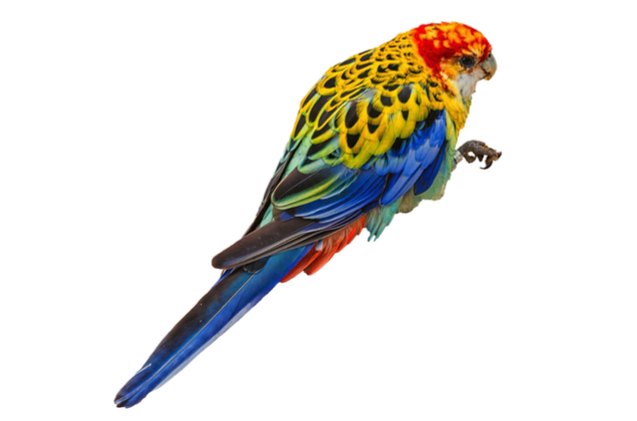Rosella Parakeet


About Rosella Parakeet
The Rosella Parakeet is part of a group of parrots with very close relations to parakeets, and many similar and shared traits. Beautifully colored, intelligent and with a strong attitude, Rosella Parakeets are exotic and sought after pet bird, even though they can be quite willful and feisty at times. Certainly one of Australia’s most colorful and intriguing birds, the Rosellas remain an iconic sight and a unique pet bird.
While undoubtedly stunning, Rosellas have a strong and feisty attitude. You should know that they can be a handful sometimes.
Native Region/Natural Habitat
Discovered as early as 1790’s by English zoologists, Rosella Parakeets inhabit a large area in Eastern Australia and Tasmania. They like to nest in lightly wooded areas, shrubbery, and bushland. Since then, large feral populations were established in New Zealand. Their flocks number as much as 100 birds, and they’re known as very territorial and quarrelsome in the wild. A little bit of this grumpy personality remained even in captivity, as a pet bird.
Rosella Parakeet is a medium-sized bird, as their length can reach up to 12 inches (30 centimeters). However, a good portion of this length is taken by their long tails, similar to other parakeet breeds. The body is stocky, well built, with a small, round head and a distinctive blunt beak. While males and females are strikingly similar, some slight color differences will set the female sex apart.
These energetic, lively birds love to make their voice heard. Talking and mimicry are present, but not a strong side of Rosella Parakeet. What they like though, is to be loud, with a full arsenal of whistles, caws, and melodies. Most of the time these repetitive, but melodic tunes are used to express their needs or anything that is not according to their wishes. They’re not always noisy though, and during certain times will be moderate and quiet. Still, their loud nature makes them a poor choice for apartment living.
The biggest pride of these feisty little parrots is their vibrant and colorful plumage. White cheeks, red head, yellow belly and greenish rump – the combinations are wild, exotic and endlessly fascinating. The back and wings are intricate and detailed, with yellow-black patterns and blue undertones. It is without a doubt an exciting and vivid bird and will be the central attraction in your home. Some sub-species, like the Crimson Rosella, are equally radiant, with different tones, like dark red and blue combinations.
Rosella Parakeet’s plumage is a real whirlwind of colors. The vibrant and bright feathers are bound to impress you!
In the wild, Rosella Parakeets will feed mainly on seeds, fruits, and flower buds, holding the food in their little feet as they eat. As a pet, most of this diet is taken care of by the usual store-bought seed mixes. What you’ll want to do, though, is supplement their diet with fresh fruits and green vegetables. Rosella Parakeet will also appreciate some cooked chicken or rice from time to time.
Don’t forget to provide them with fresh water for drinking and bathing.
Rosellas are hardy and renowned for their resilient nature. The main things to keep in mind is their hygiene, which should not be neglected, and their need to move around. They are very energetic and inquisitive, and keeping them closed in a cramped cage will lead to problems with their health. Ensure a large cage and enough time daily for flying and exploring the house. With these basic needs taken care of, your pet will be pleased and in peak health.
Resilient and healthy, the Rosellas are easy to look after. Just keep in mind their energetic, exploring personalities.
It’s no secret that these parrots are one of the most stubborn and bossy birds around. When the mood is not centered on playing and peaceful cuddling, it will be turned into a loud proclamation of your pet’s grumpy and feisty mood. This is why an experienced owner is preferred, and some time will need to pass before you adapt to your pet’s temperamental nature. Rosella Parakeet will also be quite territorial. Consider keeping them as an only pet bird, to avoid fights and bickering.
Photo credit: JFs Pic S. Thielemann/Shutterstock; Sergej Razvodovskij/Shutterstock; Butterfly Hunter/Shutterstock

A proud mama to seven dogs and ten cats, Angela spends her days writing for her fellow pet parents and pampering her furballs, all of whom are rescues. When she's not gushing over her adorable cats or playing with her dogs, she can be found curled up with a good fantasy book.
More by Angela Vuckovic

























